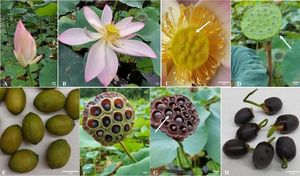Researchers investigating the role of peroxisomal core structures have made significant strides, shedding light on how these organelles contribute to cellular metabolic pathways. Peroxisomes, known for their role in breaking down fatty acids and other oxidative reactions, contain unique proteinaceous cores which can segregate diverse metabolic functions within the cell. This study focused on the smut fungus Ustilago maydis, providing new insights on the functional compartmentalization of peroxisomes through the identification of key amino acid motifs necessary for protein aggregation.
Peroxisomes play a pivotal role across various eukaryotic organisms, facilitating metabolic processes such as β-oxidation of fatty acids. Past studies have shown peroxisomes can form distinct subpopulations containing different enzyme profiles, which raises questions about how these structures maintain efficiency and specificity within metabolic pathways. By examining Ustilago maydis, the researchers found detergent-resistant core structures within its peroxisomes, which suggest the organelles may utilize protein core structures as functional segregators.
These cores were shown to house specific enzymes responsible for various metabolic activities, thereby ideally positioning the peroxisome for efficient biochemical reactions. The study revealed through microscopy analyses and biochemical assays, for example, how enzymes became concentrated within specific peroxisomal subdomains, leading to metabolic specialization.
To determine how these cores formed, the researchers were able to identify specific amino acid motifs necessary for proteins to self-assemble. These finding suggests the existence of additional mechanisms by which proteins may congregate within the peroxisomal lumen, and how such arrangements can optimize cellular metabolism.
According to the researchers, “this confinement contributes to generation of peroxisome subpopulations,” indicating the organization within peroxisomes is not arbitrary, but rather finely tuned for functional precision. By embedding the requisite short motifs, proteins could maintain stability and cohesion within the cores, preventing interference between competing metabolic reactions.
The impact of these discoveries spans beyond the fungal species studied. Given the evolutionary conservation noted among peroxisomal organelles across various eukaryotes, it’s likely similar core structures may serve analogous functions across different organisms. This opens significant avenues for exploring metabolic compartmentalization not only within fungi but widely across plant and animal systems as well.
Core structures shown to selectively exclude certain enzymes such as those directly involved with β-oxidation pathways suggest there may be sophisticated regulatory mechanisms at play. The research posits, “protein core structures serve to compartmentalize the lumen of peroxisomes, thereby preventing interference of biochemical reactions.” This sentiment emphasizes the role these cores play not just structurally but also functionally, maximizing metabolic potential.
Looking forward, such findings could play significant roles within medical and biotechnological fields, particularly as scientists continue to unravel the complex biology of organelles such as peroxisomes. Understanding how these structures work could lead to advances not only within basic cellular biology but also potential therapeutic applications for disorders linked to peroxisome function.
Summarizing the significance of these findings, the team concludes with optimism toward future research: “Metabolic compartmentalization of peroxisomes via assembly of specific proteins may occur in other organisms as well.” The next steps will likely explore these dynamics across various eukaryotic kingdoms to trace the evolutionary paths of peroxisomal function and organization.



